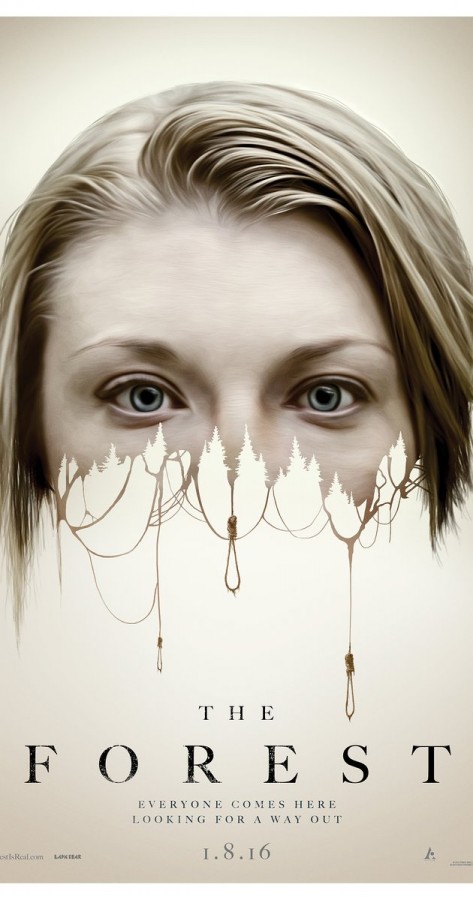The Suicide Forest
February 29, 2016
In the upcoming movie ‘Terror in the Eyes’ there is a young boy who suffers from cerebral palsy and at a young age the boy discovers that although he does not have control over his limbs, this disorder causes his mental state to heighten. He developed the ability to use his mind to hurt people who tormented him and those who treated him like he was beneath them. This movie is rated PG-13 and is in the horror genre. It follows the story of the boy’s sister who watches her brother slip slower and slower into his power hungry evil. Some audiences consider this to be inappropriate as this is ”belittling” a serious illness and seemingly making fun of it. Many reading this will be happy to learn that this is not a real movie. However the idea of turning an illness into a horror movie has become something very real with the new release “The Forest”.
The Forest is about a girl who is in search of her twin in Japan’s so-called haunted suicide forest. There she encounters normal hollywood horror. So why is this so bad? Well, this forest is a real place in Japan, called Aokigahara, also known as the Suicide Forest, Sea of Trees, and finally Forest of Demons. This forest is located on the base of Mount Fiji. It and is the second most common place for people to kill themselves in the entire world. In 2008, the national park rangers removed 256 bodies of suicide victims from the forest.
Suicide has been seen as an acceptable and honorable way to die in Japan. Dating back to the samurais, it was expected that one would kill themselves when their work was done and they were ready to move on to better themselves and those around them and themselves. This trend is seen through not only history, but most artwork centered around Japan, For example, Madame Butterfly is an opera in which the lead gives her son a better future by killing herself, and that work was created outside Japan. Japanese people have been associated with suicide for most of recorded history. There was even a novel published in Japan about the best places and ways to kill oneself. This novel is commonly found along the remains of those who committed suicide in the real life Japanese suicide forest of Aokigahara. In 2012, over 250 bodies were removed from the from the forest and since then the National Japanese Government has stopped releasing statistics from the amount of deaths occurring in the forest.
Deaths are so common in this forest that the park rangers have placed signs throughout the forest saying things such as “you are loved” and “consult with a loved one before you take your life.” Death from suicide is so socially acceptable in Japan that the park rangers joked in an interview on the Japan Times. Saying that when they uncover a body in the forest, they rock-paper-scissors to see who has to sleep with it in their room until the mortician can come receive it the next day.
The most common place for people to commit suicide in the entire world is the Golden Gate Bridge, but the second most common remains this forest. This explains why so many Japanese-Americans are upset by the movie “The Forest” because it is turning an epidemic into a horror movie. It is belittling the seriousness of this issue, viewing suicide as simply nothing more than a way to make money.


